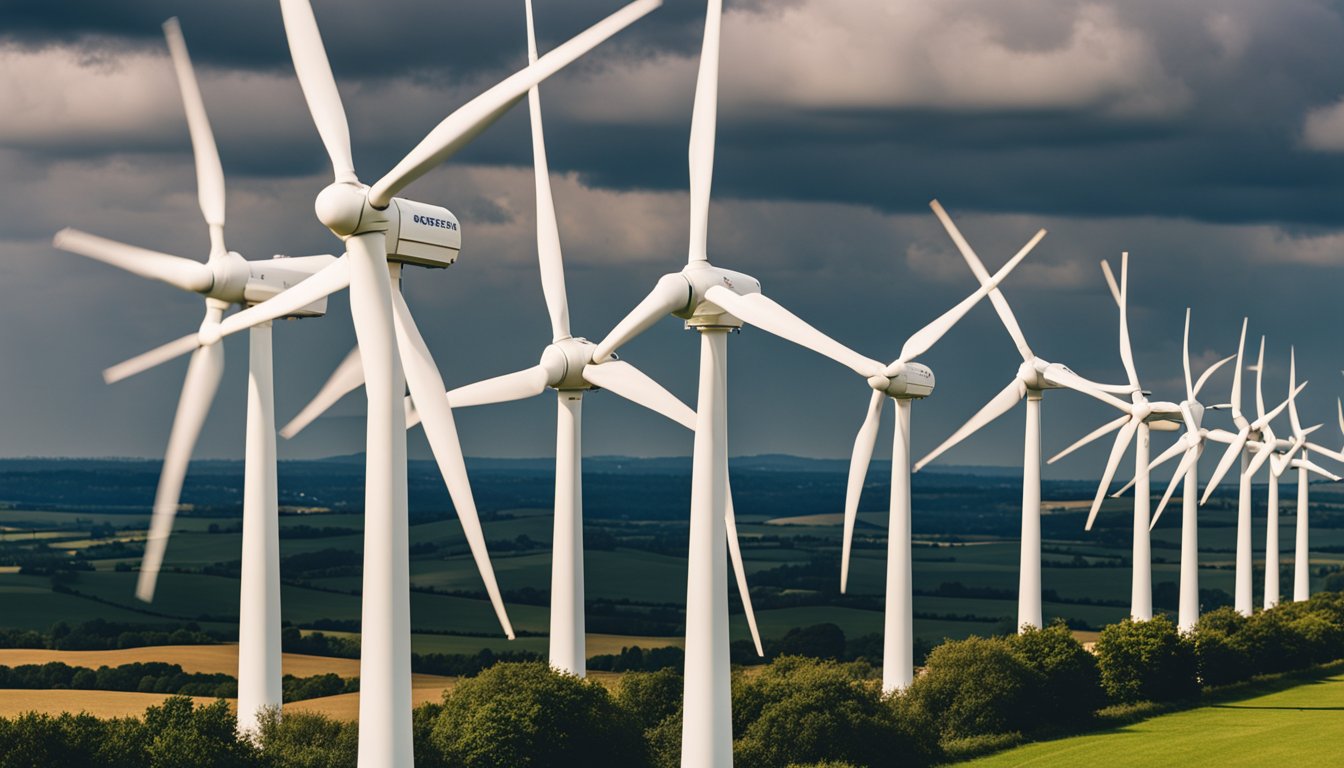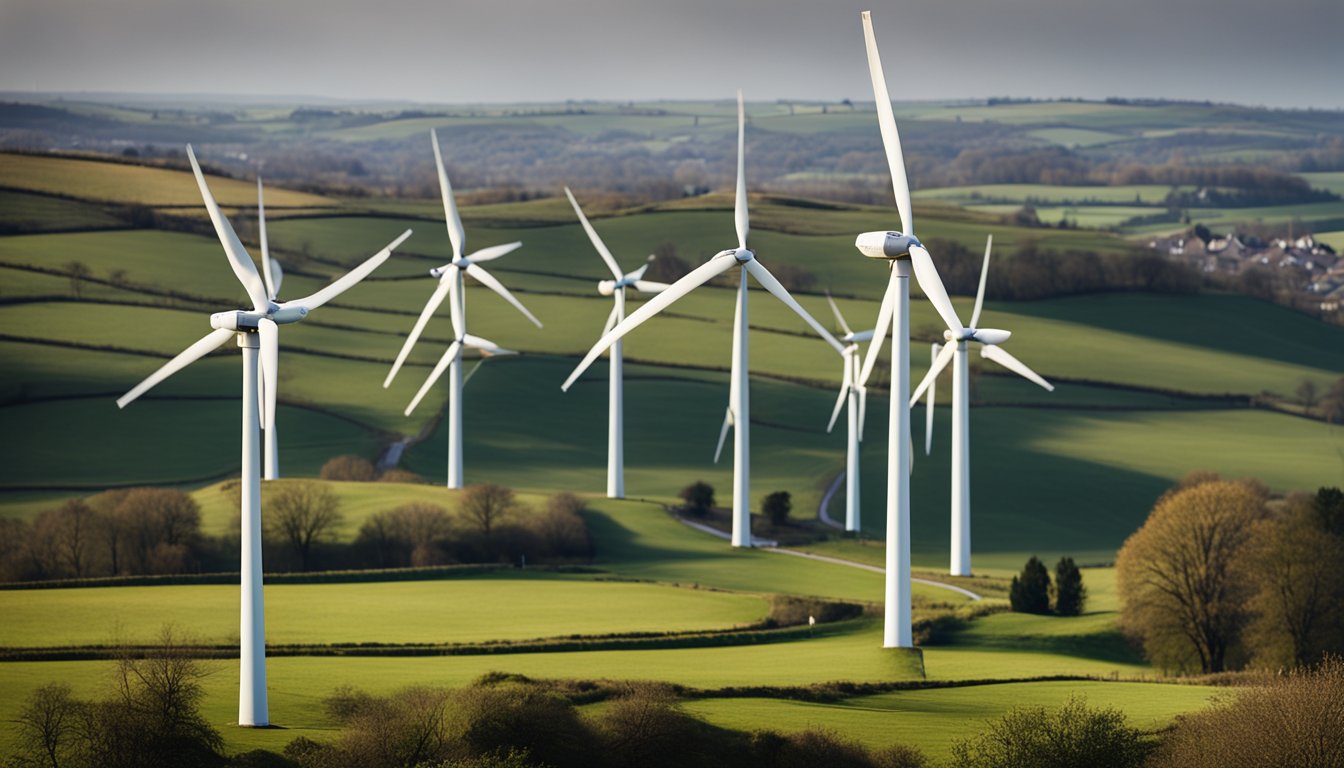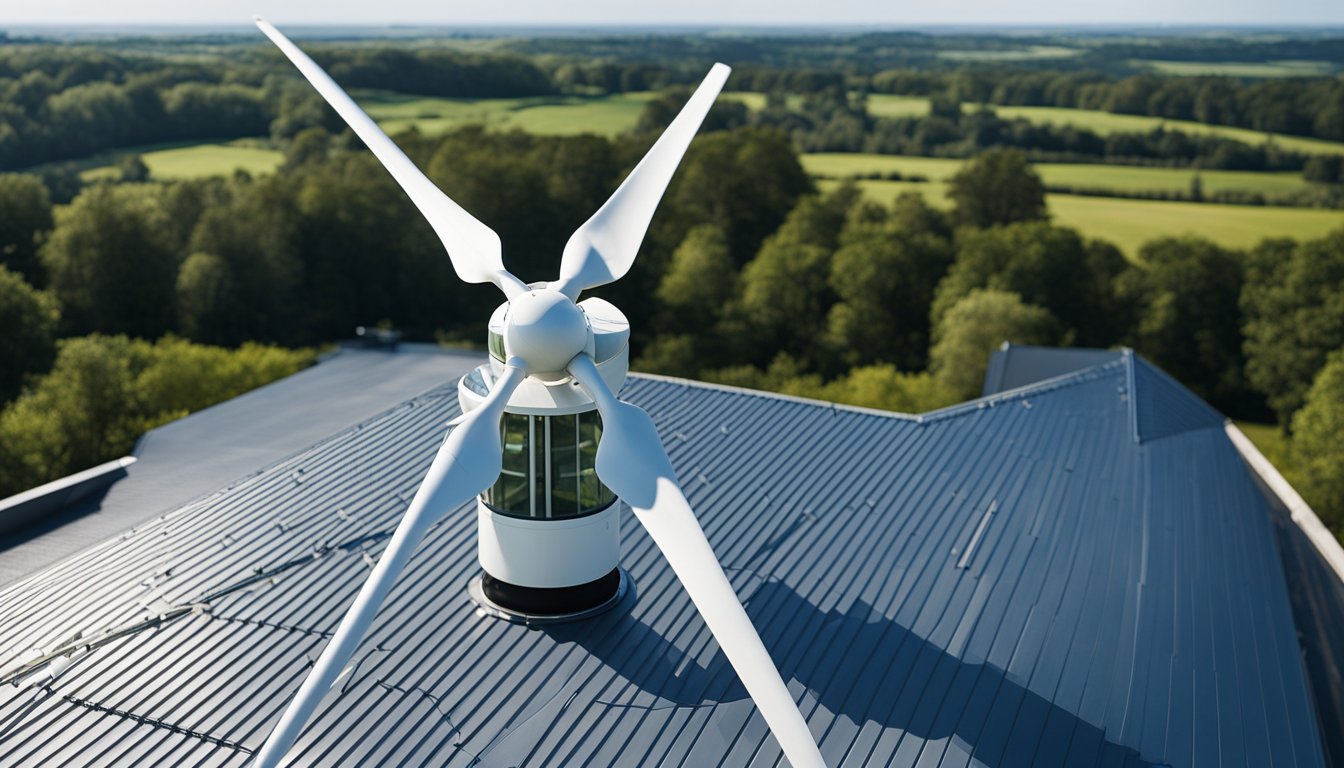Late updated: 28 Dec 2024 16:12
Written by: Eleanor Hartman
Innovative Wind Turbine Designs For UK Homes: Harnessing Renewable Energy Efficiently
Exploring the world of innovative wind turbine designs opens new horizons for sustainable energy in UK homes. With advances such as AI-designed urban turbines, we now have solutions that can harness wind efficiently, even in less windy locations like Birmingham. These groundbreaking designs have the potential to revolutionise how British households access clean energy, bringing green solutions right to our homes.

The urban environment presents unique challenges for wind energy deployment, but recent innovations are tailoring designs specifically for these settings. By leveraging technology and creative design, we can overcome limitations of traditional wind turbines, unlocking renewable energy sources for cities across the UK. Our journey into this field reveals not just technological progress but also a commitment to greener living.
As interest in sustainable energy grows, innovative concepts like vertical axis and omnidirectional turbines capture our attention. They not only promise higher efficiency but also signify a shift towards more adaptable energy solutions. Embracing these advancements may well pave the way for a cleaner, more sustainable future for all of us.
Key Takeaways
- Innovative designs make wind energy viable in urban settings.
- Advances in technology enhance efficiency for home use.
- New turbines help promote sustainable energy in the UK.
Emerging Technologies in Wind Energy
In the evolving landscape of wind energy, new technologies are enhancing efficiency and reducing environmental impact. AeroMINE Technologies and AI-driven design are leading this transformation, while motionless systems offer intriguing developments for urban areas.
AeroMINE Technologies
AeroMINE Technologies introduces a fresh approach to wind energy with its motionless wind energy systems. Unlike traditional turbines, AeroMINE systems harness aerodynamic principles to capture wind without rotating blades. This innovative design reduces noise pollution and minimises the threat to wildlife, particularly birds. The compact design also makes it suitable for installation in densely populated urban areas. Key benefits include lower maintenance costs due to the absence of moving parts, making AeroMINE a promising solution for sustainable and efficient urban energy generation.
Birmingham Blade and AI Design
Utilising AI, Birmingham Blade represents a leap in wind turbine design. AI design processes generate and test various configurations, optimising performance in specific urban environments such as Birmingham. With average wind speeds around 3.6 meters/second, AI simulations improve efficiency by adapting to local conditions. This method pioneers a more sustainable approach by fine-tuning the evolutionary design process to maximise energy capture. As artificial intelligence continues to develop, further optimisation in design will likely enhance both the efficiency and effectiveness of wind power systems utilised in cities.
Motionless Wind Energy Systems
Motionless Wind Energy Systems provide an alternative to traditional turbines. They operate using innovative mechanisms like vibrating columns to capture and convert wind energy. The absence of blades leads to a significant reduction in noise and an environmentally friendly impact, specifically protecting avian life from harm. Their unique structural design allows for easier integration into urban environments, where conventional turbines pose challenges. The potential for reduced maintenance costs further underscores their viability as a forward-thinking solution in the push towards renewable energy sources.
Deployment and Challenges in the UK

Deploying effective wind turbine designs in the UK involves navigating urban environments, optimising for local wind conditions, and incorporating predictive technology. These efforts aim to enhance energy generation, especially in cities like Birmingham, Edinburgh, and Oxford.
Adapting to Urban Landscapes
Urban environments pose unique challenges for wind turbine deployment. Limited space and aesthetic concerns require innovative designs like rooftop installations. Vertical airfoils and curved blades can be particularly beneficial, providing efficient energy generation in restricted areas.
Challenges also include noise reduction and vibration management. Our urban-friendly turbine designs focus on these aspects to gain local acceptance while maximising energy output. These innovations aim to integrate seamlessly within city skylines, providing sustainable energy solutions.
Optimising for Variable Wind Conditions
Wind conditions in the UK vary significantly, with low wind speeds and turbulence common, especially in urban areas. To address this, our designs prioritise adaptability. Innovations like adjustable blade pitch enhance performance under inconsistent wind patterns.
By employing turbines with optimised rotor designs, we can harness even subtle breezes. These technologies are crucial for maximising energy output while maintaining consistent performance across different weather scenarios, ensuring reliability in electricity generation.
Integrating Predictive Solutions
Integrating predictive solutions plays a vital role in optimising wind turbine operations. By utilising data analytics and machine learning, we can anticipate wind conditions and adjust turbine settings proactively. This approach improves energy efficiency and reduces wear and tear on equipment.
Furthermore, predictive maintenance reduces downtime by alerting us to potential issues before they escalate. These technologies are crucial for enhancing the longevity and performance of wind turbines, especially in areas like Birmingham, Edinburgh, and Oxford, where urban dynamics can impact operational efficiency.
Frequently Asked Questions

Incorporating wind turbines into UK homes comes with various considerations. We're addressing the cost-effectiveness, design innovations, and overall capability to meet household energy needs.
What are the most cost-effective wind turbine designs for UK residences?
Cost-effective designs in the UK often prioritise both efficiency and affordability. Horizontal-axis turbines are widely popular due to their proven performance, while some vertical-axis models offer lower installation costs and less noise, making them suitable for urban settings.
How do bladeless wind turbines compare to traditional models for domestic use in the UK?
Bladeless turbines, such as the Vortex, present a unique alternative with minimal noise and maintenance. These designs differ significantly from traditional models by utilising oscillation without rotating blades. While they produce less energy, their low impact and aesthetic appeal make them attractive for homes with space constraints.
What are the top-rated wind turbine kits for home installation available in the UK market?
Numerous kits available in the UK cater to various needs and budgets. Popular options often include comprehensive setups from trusted brands that provide easy installation and reliable support. Kits tailored for different wind conditions ensure that homeowners can optimise energy capture according to their location.
How does the Vortex Bladeless wind turbine perform in a UK home setting?
The Vortex Bladeless showcases innovative technology suitable for small-scale residential use. Its quiet operation and low maintenance make it ideal for areas where traditional turbines are impractical. Though not as powerful as conventional turbines, it complements solar systems well, offering a balanced renewable energy solution.
What is the necessary size of a wind turbine to adequately power an average UK household?
The size of a wind turbine required varies based on household energy needs and local wind conditions. Generally, a turbine with a capacity of 5 to 15 kW suffices for an average UK home. Site assessments help determine the optimal size, ensuring efficiency and cost-effectiveness.
How do the latest 2024 wind turbine designs improve upon earlier models for UK homeowners?
Recent developments in turbine technology focus on improved efficiency and reduced noise. Innovations aimed at enhancing blade aerodynamics and generator performance play a significant role. These advances enable turbines to operate effectively in lower wind speeds, making residential adoption more feasible across diverse parts of the UK.